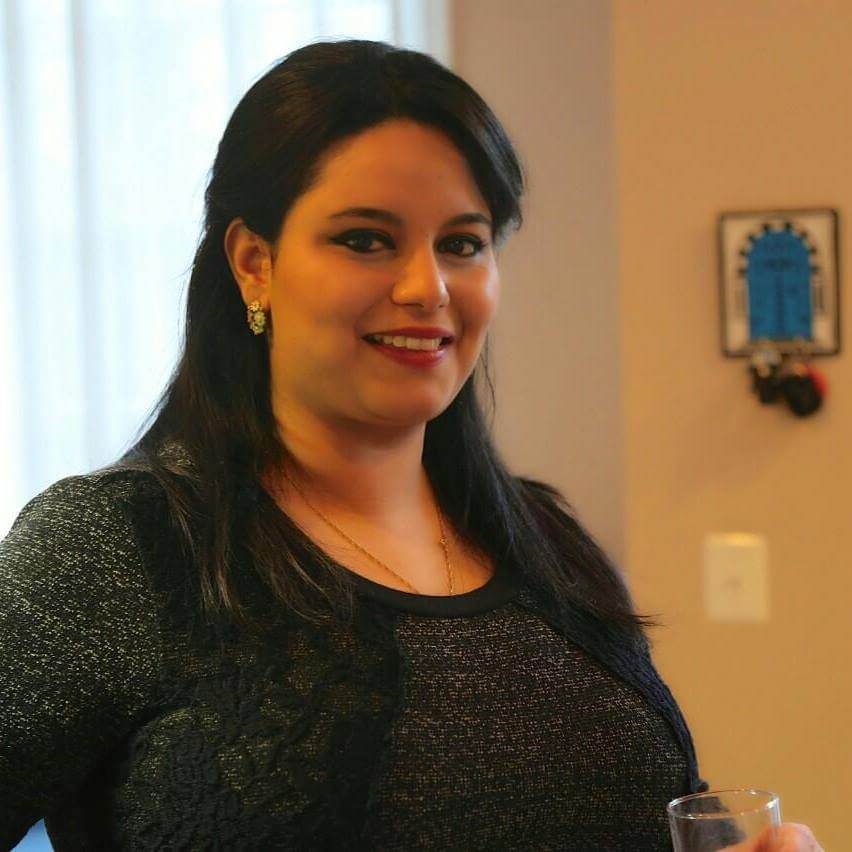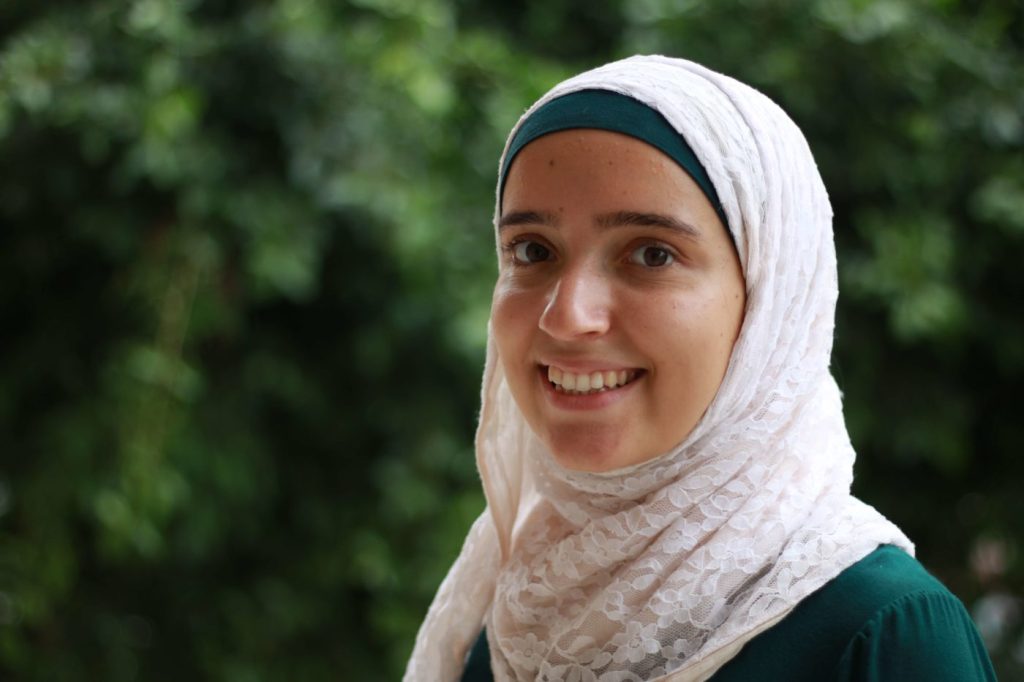Mouna Ben Garga: To create change is my life commitment

[bctt tweet=”Mouna Ben Garga is working to influence national and international agendas” username=”SheLeadsAfrica”] Are you familiar with the terms advocacy, social change or community development? Well, you cannot separate these words from Tunisian-born Mouna Ben Garga because she lives by them. Mouna Ben Garga epitomizes the notion of active citizenship and innovation for social change. Community mobilization and development are her passion. When she isn’t advocating for the rights of immigrants in the US, Mouna’s working to influence national and international agendas. Share with us what you do. How many people you touch and how long you have been at it? Since 2009, I have committed myself to advocate and mobilize communities. I started as a member of the Junior Chamber International in which we build the capacity of youth to find solutions and be agents of change in their communities. Moving to the United States, I got engaged with the African Diaspora advocating for the rights of immigrants and engagement in the continent through the AU Diaspora participation program. Finishing my Master in Public Policy, I found myself doing what I always loved to do as a profession; “community development and advocacy”. I work to create strong alliances to influence national and international agendas around critical causes such as climate change, Agenda 2030 and youth engagement. Currently, as a programme officer at CIVICUS, a global alliance dedicated to strengthening citizen action and civil society around the world, I support civil society organizations in Africa and Middle East to develop their innovation capacity in community building and mobilization. What are you excited about lately? I am excited about innovation for social change. For a long time, innovation was associated with business and science. However, lately we’re starting to witness the rise of innovation for social change and impact. Lately, I am working to make it part of communities empowerment in Africa and Middle East. [bctt tweet=”Lately we’re starting to witness the rise of innovation for social change and impact” username=”SheLeadsAfrica”] Why do you believe in the work you do? Any sustainable positive change comes from within. But together we are stronger, more influential and more efficient. Thus, I work to connect people and communities and build partnerships. How do you stay motivated? Reading and watching the impact that people are making around the world. It could start from a video advocating women’s right in India. Then, there is an innovative app which helps raise money for Syrian refugees. I have also been recently motivated by an article about a solution for climate change initiated in small village in Tunisia by a young woman. These achievements empower me to keep working because I am not trying alone. What is that one thing you think needs to be improved on in Africa’s development? Full engagement! Decisions about Africa and its development are taken in offices far away from people who will be the final implementers. Many plans and strategies are published every year and with any new international action, but the implementation mechanisms are not effective. This delays the impact and creates more tensions. African citizens should play an important part in the continent’s development and not only limited to consultative role. A participatory approach is needed and a process of co-design in which civil society organisations (CSOs) play the interim agent between communities and governments. [bctt tweet=”African citizens should play an important part in the continent’s development” username=”SheLeadsAfrica”] What do you appreciate most about your country, Tunisia? Youth! As most of the African countries, our treasure in Tunisia is our youth. Despite the political instability, our youth is finding many ways to make a change. It is true that many of us decided to be active in CSOs but they are working toward showing a real impact and influencing political process. We stand for our rights, against corruption and we demand transparency and engagement. We’ve reached a point in Tunisia at which the youth are moving from protesting to influencing. What do you think makes a good road trip? Companionship is what makes a good road trip. Even though you can enjoy the good view and the trip journey alone, it is more nurturing to share it with others. You learn new things from company and your eyes open to new facts and realities. In fact, you will probably pay attention to other details in the road that you would not see alone. What three items do you always carry with you on a road trip? CD and books My favourite music Cash Want to see women you know featured on SLA? Tell us what amazing things women are doing in your communities here.
Hajer Kammoun: I’ve always been engaged in multitasking

You know, sometimes you meet people that just make you want to sit down and reconsider your life’s objectives. Hajer Kammoun is one such person. She’s a medical student, a member of the International Association of Medical Students (Assiociamed), runs a school magazine, has participated in the SUSI program and is aiming at launching a social enterprise this year. It doesn’t stop there. Hajer also plays the lute and is an active member of the Junior Chamber International (JCI) with which she directs the ‘HopiClown’ project which brings clowns to hospitals to cheer up sick kids. Hajer is now trying to revolutionise the Tunisian educational system through her upcoming social enterprise. Read on to get the biggest dose of inspiration you’ll receive this week. Let’s start with the ‘Hopiclown’ project, how did you come to be the director it? I always wanted to be a member of a ‘Clowns in a Hospital’ group. Since I didn’t find one , I wanted to create my own team. I had in my mind a new approach which was to engage youth and give them an opportunity to all experience being clowns. This was to unlock their potential, challenge them, organize them as a team (for many of them, it was their first time preparing and presenting shows in public), show and present them in public and have fun. All while creating happiness and bringing hope and joy of living to patients in hospitals. I presented my idea and strategy to Junior Chamber International (JCI), a nonprofit organization of young active citizens age committed to creating impact in their communities. While some of the members approved the idea of organizing an event that targets children, the majority were against it. They thought the whole idea of us doing clown shows would be ridiculous and that it’d be better to hire professional clowns for this project. They thought it would be impossible for us to cheer up sick children because it requires experience. But, I wasn’t convinced! I was so driven by the dream of being with my clown family and drawing smiles on children’s faces that the only thing I had in mind was to find another strategy to do it. What did you do to overcome this challenge? First, I had to get permission and know more about any challenges we could facing. Then, I wrote a letter asking to the Chief of Pediatric Service. On our first round, I went with my sister, two JCI members and a friend to a hospital. We took with us some gifts and decoration bought from our own money. I also brought my lute with me. Even though we weren’t dressed as clowns, we talked to children and to their parents and made them laugh. I played my lute for them and we sang all together. This experience taught us a lot about working with sick children and their parents. We learnt things we would do again and things we’d have to avoid, the best gifts and the way we should give them… Most importantly, we saw the joy in the eyes of children and the happiness shared between parents as we performed. This proved me again how important my clowns in a hospital project would be. Still, I had to ensure that I, and anyone involved in my project, were able to deal with sick children and understand their psychology without making any unnecessary errors. To motivate and create my team, I organized an open event, a training called ‘HopiClown’ in collaboration with a pedopsychiatrist, Mrs Sarra Bousleh and a comedian actor and producer, Mr. Wissem Slimene. Did the training help with finally establishing ‘HopiClown’? People who assisted loved the first training , many of them got comfortable with the idea of being clowns or at least with being disguised as fairies, cats, etc. I was able to grow my team by many members. We then had another training with Mr. Slimene to show us how to put on a clown’s play. From that day on, we became a large team organizing full clown shows with theatre, music, dancing, storytelling, team games and more. The gift we get each time we put on a show, is the joy we see on the faces of children and their parents. We’ve one put on a show after the death of a baby and managed to change the atmosphere 180 degrees. I love how we create this huge impact while at the same time developing our skills and having a lot of fun too! I now have a large clown family who have put on great shows with their amazing skills. Moreover, they keep asking me each time we meet about the next event. People I’ve never met before have contacted me to ask for my help with putting up shows in carcinology service and the elderly home of Sousse. Why did you decide to start a magazine in your secondary school? There were three things that gave me this idea. First, wherever I am I want to leave my fingerprint. I want to make it so when I leave, I’ve made a change in the environment so it’s not the same as when I entered. So, I had it in my mind to leave something to my school. Second, one month before I started working on the magazine, a group of Belgians came to our school. I witnessed how different their perspectives of us compared to our reality as young Tunisian students. I thought that it’d have been much better to have something to show them. Like a product of our school that informs about us, our culture, our talents, our ways of living, our thoughts etc. Third is that we never had a school magazine before, so I thought it was high time we made one. This is how I got the idea to combine students’ skills to create a product that will last forever in our school, a magazine. We used the income
